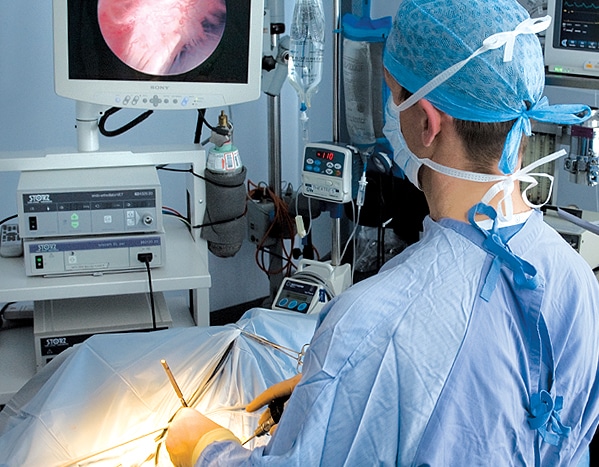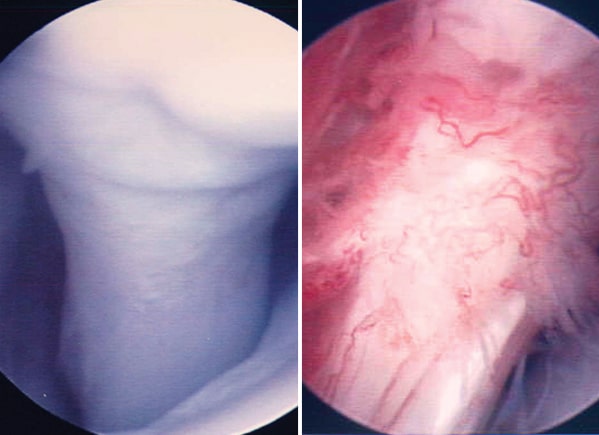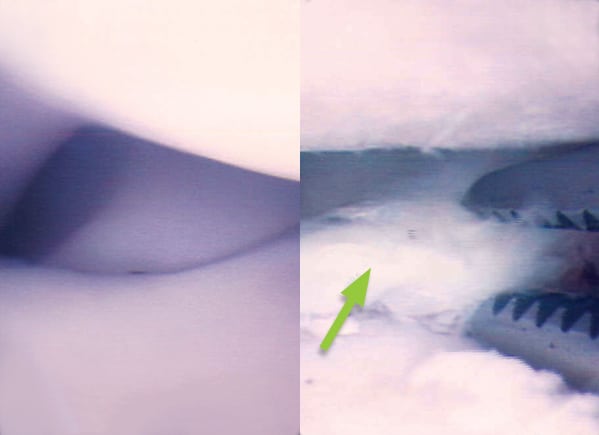
What is arthroscopy?
Arthroscopy is a technique for examining the inside of a joint using a tiny camera. This allows detailed assessment of the joint in a minimally invasive fashion, avoiding some of the risks and discomfort that can be associated with traditional, more extensive ‘open’ surgery. Sometimes arthroscopy is performed to gather information to help make a diagnosis and decide on treatment options and the outlook (prognosis). In other situations, arthroscopic surgery is performed to treat a particular problem.
When is arthroscopy performed?
In theory, arthroscopy can be performed on any joint, but it is most commonly performed on the elbow for investigation and treatment of elbow dysplasia, and on the shoulder for conditions such as osteochondrosis, biceps tendon tears and ligament ruptures. Arthroscopy is also used on selected occasions in the knee (stifle), and less commonly the hip, wrist (carpus) and ankle (hock) joints.
What is involved in arthroscopy?
Arthroscopy is performed with the animal under a general anaesthetic. The hair over the affected joint is clipped off and the skin cleaned, in a similar way to any other surgical procedure. Small incisions, or portals, are then made into the joint to allow introduction of fluid and the arthroscopic camera and instruments. Different sizes of camera are used depending on the joint involved and the size of the patient; the cameras range from 1.9mm to 2.7mm wide. Because the cameras and instruments are so small, the incisions into the joint only need to be a few millimetres long. As a result, any discomfort after the operation is minimised and recovery can be rapid.

Arthroscopic surgery being performed on a dog
Aftercare
Because arthroscopic surgery is minimally invasive, the recovery tends to be quick. Most dogs are discharged from the hospital within 24 hours of the procedure. There is inevitably some mild discomfort after the operation, but this usually subsides over a couple of days and is easily controlled with painkillers. Most dogs will need to be restricted to walks on the lead for a week or so to allow healing of the skin incisions; skin sutures are removed after 10-14 days. Depending on the underlying problem in the joint, additional aftercare may be needed, such as physiotherapy/hydrotherapy or ongoing management of osteoarthritis.
Risks and complications
Theoretically, the risks of arthroscopy can include infections and anaesthetic complications, but these are extremely rare.

Normal and inflamed biceps tendons in the shoulder joint

Normal elbow joint and an elbow with a fragmented coronoid process being removed with forceps (arrow)
We are always happy to discuss any aspects of a case with you or your vet prior to referral. If you have any questions or concerns please contact us.
Arranging a referral for your pet
If you would like to refer your pet to see one of our Specialists please visit our Arranging a Referral page.